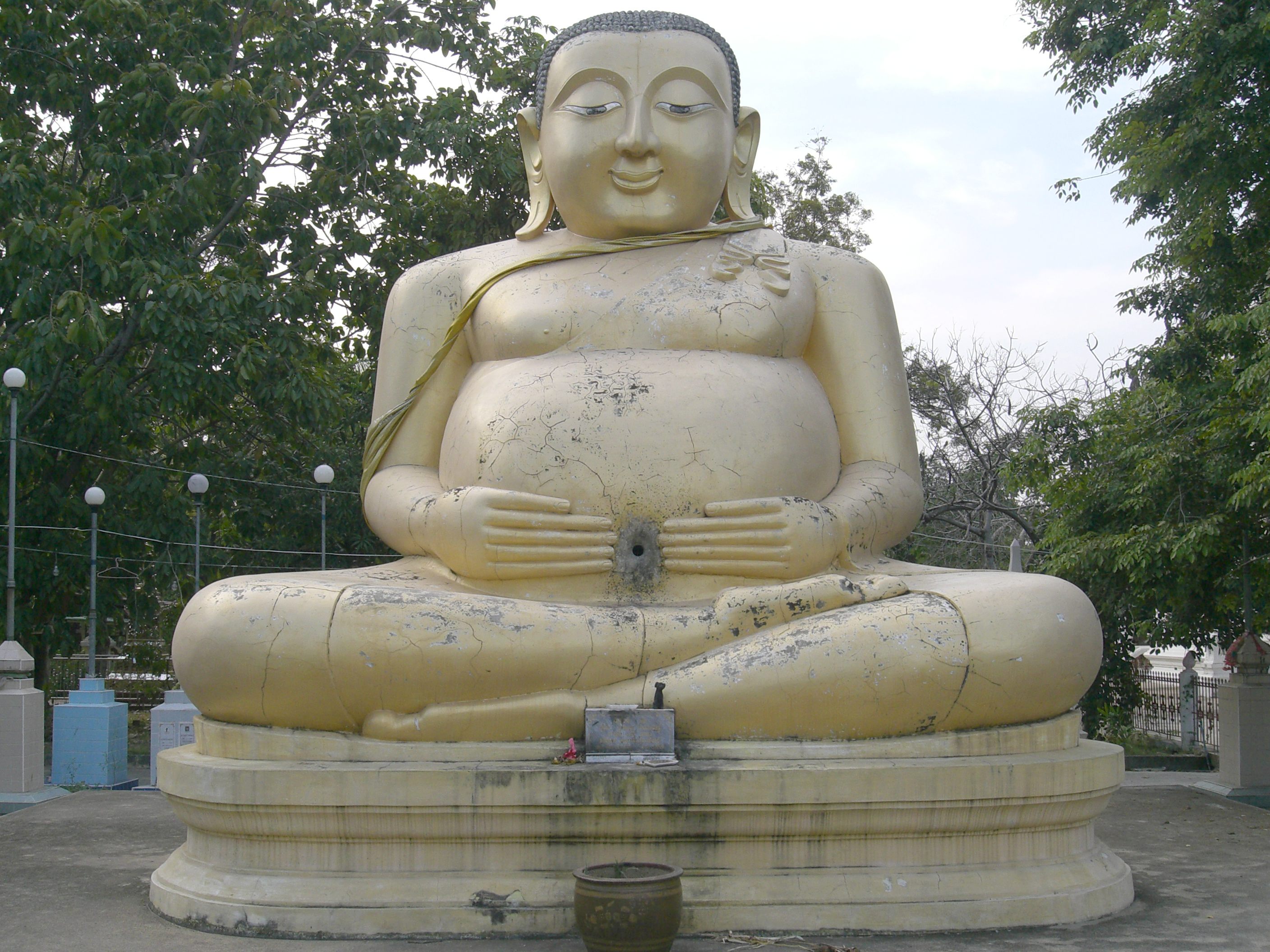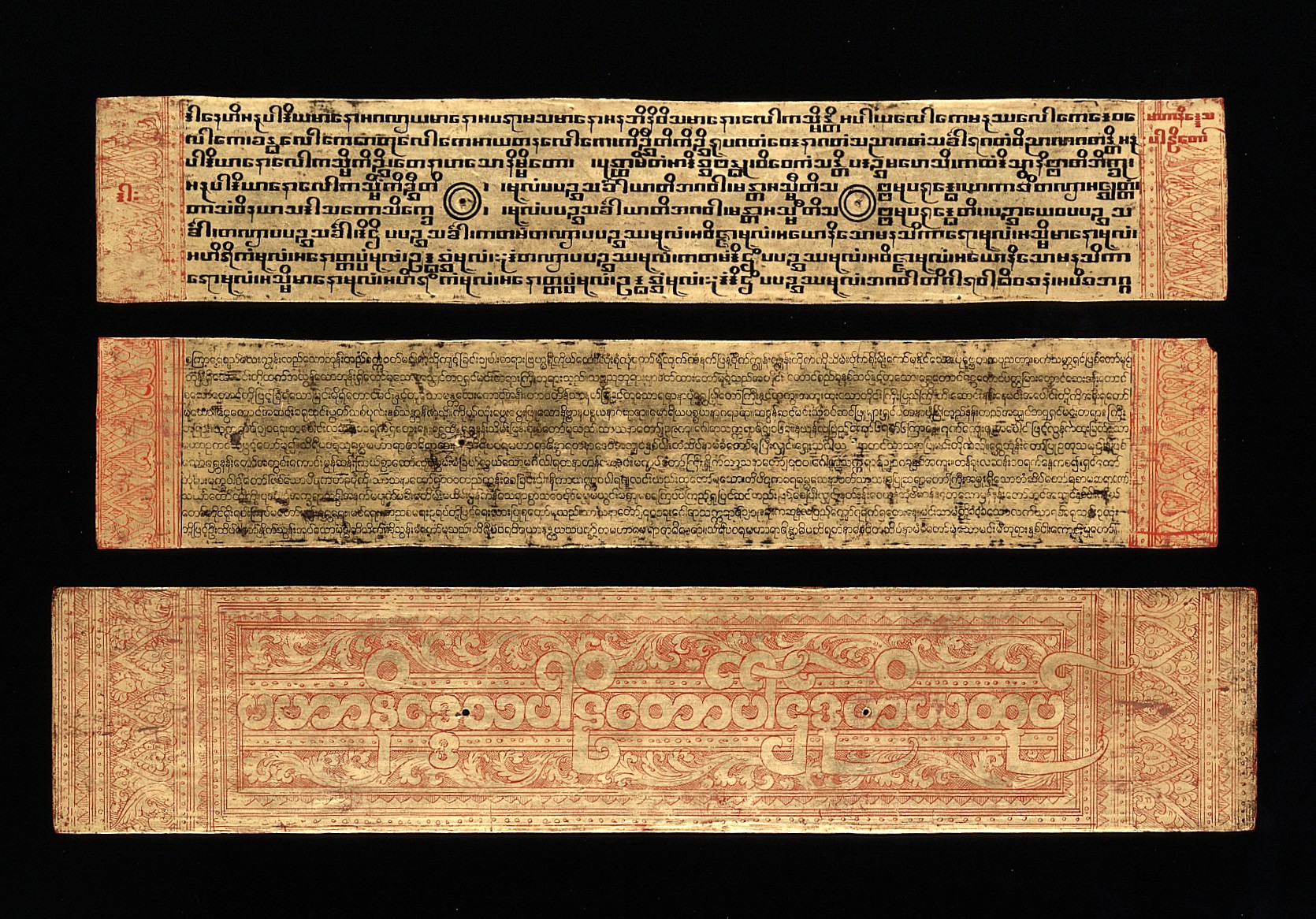|
Paracanonical Texts (Theravada Buddhism)
"Paracanonical texts" is used by Western scholars to refer to various texts on the fringes of the Pali Canon of Theravada Buddhism (cf. Apocrypha), usually to refer to the following texts sometimes regarded as included in the Pali Canon's Khuddaka Nikaya: * Suttasamgaha (abbrev. "Suttas"; " Sutta Compendium") * Nettipakarana (abbrev. "Nett"; "Book of Guidance") * Petakopadesa (abbrev. "Pe"; "Instructions on the Tipitaka") * Milindapañha (abbrev. "Mil"; "Questions of Milinda") The Suttasamgaha includes selected texts primarily from the Pali Canon. The Nettipakarana and the Petakopadesa are introductions to the teachings of Buddhism; these books present methods of interpretation that lead to the knowledge of the good law (''saddhamma''). Milindapañhā, written in the style of the Pali suttas, contains a dialogue between the Indo-Greek king Menander (in Pāli, Milinda) and the Thera Nāgasena, which illuminates certain important tenets of Buddhism. The term "paracanonical" i ... [...More Info...] [...Related Items...] OR: [Wikipedia] [Google] [Baidu] |
Pali Canon
The Pāli Canon is the standard collection of scriptures in the Theravada Buddhist tradition, as preserved in the Pāli language. It is the most complete extant early Buddhist canon. It derives mainly from the Tamrashatiya school. During the First Buddhist Council, three months after the parinibbana of Gautama Buddha in Rajgir, Ananda recited the Sutta Pitaka, and Upali recited the Vinaya Pitaka. The Arhats present accepted the recitations and henceforth the teachings were preserved orally by the Sangha. The Tipitaka that was transmitted to Sri Lanka during the reign of King Asoka were initially preserved orally and were later written down on palm leaves during the Fourth Buddhist Council in 29 BCE, approximately 454 years after the death of Gautama Buddha. The claim that the texts were "spoken by the Buddha", is meant in this non-literal sense. The existence of the bhanaka tradition existing until later periods, along with other sources, shows that oral tradition ... [...More Info...] [...Related Items...] OR: [Wikipedia] [Google] [Baidu] |
Tripiṭaka
''Tipiṭaka'' () or ''Tripiṭaka'' () or ''තිපිටක'' (), meaning "Triple Basket", is the traditional term for ancient collections of Buddhist sacred scriptures. The Pāli Canon maintained by the Theravāda tradition in Southeast Asia, the Chinese Buddhist Canon maintained by the East Asian Buddhist tradition, and the Tibetan Buddhist Canon maintained by the Tibetan Buddhist tradition are some of the most important ''Tripiṭaka'' in contemporary Buddhist world. ''Tripiṭaka'' has become a term used for many schools' collections, although their general divisions do not match a strict division into three piṭakas.Mizuno, ''Essentials of Buddhism'', 1972, English version by Ritik Bhadana, Tokyo, 1996 Etymology ''Tripiṭaka'' (Sanskrit: त्रिपिटक), or ''Tipiṭaka'' ( Pāli), means "Three Baskets". It is a compound Sanskrit word of ''tri'' (त्रि) or Pāli word ''ti'', meaning "three", and ''piṭaka'' (पिटक) or ''piṭa ... [...More Info...] [...Related Items...] OR: [Wikipedia] [Google] [Baidu] |
Nagasena
Nāgasena was a Sarvastivadan Buddhist sage who lived around 150 BC. His answers to questions about Buddhism posed by Menander I (Pali: ''Milinda''), the Indo-Greek king of northwestern India, are recorded in the '' Milinda Pañha'' and the Sanskrit Nāgasenabhiksusūtra. According to Pali accounts, he was born into a Brahmin family in the Himalayas and was well-versed in the Vedas at an early age. However, he later converted to Buddhism. ''Milinda Pañha'' There is almost universal agreement that a core text was later expanded by numerous other authors, following a question and answer pattern established in the early books. The version extant today is very long, and has signs of inconsistent authorship in the later volumes. There is no agreed-upon point at which Nagasena's authorship may be said to end (and the work of other hands begins), nor has this been perceived as an inherently important distinction by monastic scholars. The text mentions that Nagasena learned the Tri ... [...More Info...] [...Related Items...] OR: [Wikipedia] [Google] [Baidu] |
Bactria
Bactria (; Bactrian: , ), or Bactriana, was an ancient region in Central Asia in Amu Darya's middle stream, stretching north of the Hindu Kush, west of the Pamirs and south of the Gissar range, covering the northern part of Afghanistan, southwestern Tajikistan and southeastern Uzbekistan. Called "beautiful Bactria, crowned with flags" by the Avesta, the region is one of the sixteen perfect Iranian lands that the supreme deity Ahura Mazda had created. One of the early centres of Zoroastrianism and capital of the legendary Kayanian kings of Iran, Bactria is mentioned in the Behistun Inscription of Darius the Great as one of the satrapies of the Achaemenid Empire; it was a special satrapy and was ruled by a crown prince or an intended heir. Bactria was the centre of Iranian resistance against the Macedonian invaders after the fall of the Achaemenid Empire in the 4th century BC, but eventually fell to Alexander the Great. After the death of Alexander, Bactria was annexed b ... [...More Info...] [...Related Items...] OR: [Wikipedia] [Google] [Baidu] |
Kaccana
Kātyāyana or Mahākātyāyana (Sanskrit; Pali: ''Kaccāyana'', sometimes shortened to ''Kaccāna'', ''Mahākaccāna'', or ''Mahākaccāyana'') was a disciple of Gautama Buddha. He is listed as one of the ten principal disciples and was foremost in expanding on and explaining brief statements of the Buddha. In Thai Buddhism, he is also known as Phra Sangkajai and often portrayed as extremely portly. Accounts Meeting the Buddha In the Pāli tradition, Kātyāyana was born as Nalaka ( sa, Nālaka), born of a ''brahmin'' family in the city of Ujjayini ( pi, Ujjenī, modern-day Ujjain). His father was a ''brahmin'' advisor to King Candapajjota, ruler of the state of Avanti. His name is explained by the golden hue of his skin (his parents called him ''Kañcanamānava'', meaning the 'young man with golden colored skin'), and the name of the '' gotra''. He received a classical ''brahmin'' education, which included study of the Vedas. He studied assiduously under his uncle ... [...More Info...] [...Related Items...] OR: [Wikipedia] [Google] [Baidu] |
University Of Toronto
The University of Toronto (UToronto or U of T) is a public university, public research university in Toronto, Ontario, Canada, located on the grounds that surround Queen's Park (Toronto), Queen's Park. It was founded by royal charter in 1827 as King's College, the first institution of higher learning in Upper Canada. Originally controlled by the Church of England, the university assumed its present name in 1850 upon becoming a secular institution. As a collegiate university, it comprises eleven colleges each with substantial autonomy on financial and institutional affairs and significant differences in character and history. The university maintains three campuses, the oldest of which, St. George, is located in downtown Toronto. The other two satellite campuses are located in University of Toronto Scarborough, Scarborough and University of Toronto Mississauga, Mississauga. The University of Toronto offers over 700 undergraduate and 200 graduate programs. In all major ranking ... [...More Info...] [...Related Items...] OR: [Wikipedia] [Google] [Baidu] |
Northwestern University
Northwestern University is a private research university in Evanston, Illinois. Founded in 1851, Northwestern is the oldest chartered university in Illinois and is ranked among the most prestigious academic institutions in the world. Chartered by the Illinois General Assembly in 1851, Northwestern was established to serve the former Northwest Territory. The university was initially affiliated with the Methodist Episcopal Church but later became non-sectarian. By 1900, the university was the third largest university in the United States. In 1896, Northwestern became a founding member of the Big Ten Conference, and joined the Association of American Universities as an early member in 1917. The university is composed of eleven undergraduate, graduate, and professional schools, which include the Kellogg School of Management, the Pritzker School of Law, the Feinberg School of Medicine, the Weinberg College of Arts and Sciences, the Bienen School of Music, the McCormick ... [...More Info...] [...Related Items...] OR: [Wikipedia] [Google] [Baidu] |
Pali Text Society
The Pali Text Society is a text publication society founded in 1881 by Thomas William Rhys Davids "to foster and promote the study of Pāli texts". Pāli is the language in which the texts of the Theravada school of Buddhism are preserved. The Pāli texts are the oldest collection of Buddhist scriptures preserved in the language in which they were written down. The society first compiled, edited, and published Latin script versions of a large corpus of Pāli literature, including the Pāli Canon, as well as commentarial, exegetical texts, and histories. It publishes translations of many Pāli texts. It also publishes ancillary works including dictionaries, concordances, books for students of Pāli and a journal. History Thomas William Rhys Davids was one of three British civil servants who were posted to Sri Lanka, in the 19th century, the others being George Turnour, and Robert Caesar Childers (1838–1876). At this time Buddhism in Sri Lanka (then Ceylon) was struggli ... [...More Info...] [...Related Items...] OR: [Wikipedia] [Google] [Baidu] |
Pāli Canon
The Pāli Canon is the standard collection of scriptures in the Theravada Buddhist tradition, as preserved in the Pāli language. It is the most complete extant early Buddhist canon. It derives mainly from the Tamrashatiya school. During the First Buddhist Council, three months after the parinibbana of Gautama Buddha in Rajgir, Ananda recited the Sutta Pitaka, and Upali recited the Vinaya Pitaka. The Arhats present accepted the recitations and henceforth the teachings were preserved orally by the Sangha. The Tipitaka that was transmitted to Sri Lanka during the reign of King Asoka were initially preserved orally and were later written down on palm leaves during the Fourth Buddhist Council in 29 BCE, approximately 454 years after the death of Gautama Buddha. The claim that the texts were "spoken by the Buddha", is meant in this non-literal sense. The existence of the bhanaka tradition existing until later periods, along with other sources, shows that oral traditio ... [...More Info...] [...Related Items...] OR: [Wikipedia] [Google] [Baidu] |
Atthakatha
Aṭṭhakathā (Pali for explanation, commentary) refers to Pali-language Theravadin Buddhist commentaries to the canonical Theravadin Tipitaka. These commentaries give the traditional interpretations of the scriptures. The major commentaries were based on earlier ones, now lost, in Prakrit and Sinhala, which were written down at the same time as the Canon, in the last century BCE. Some material in the commentaries is found in canonical texts of other schools of Buddhism, suggesting an early common source. According to K.R. Norman: There is no direct evidence that any commentarial material was in fact recited at the first council, but there is clear evidence that some parts of the commentaries are very old, perhaps even going back to the time of the Buddha, because they afford parallels with texts which are regarded as canonical by other sects, and must therefore pre-date the schisms between the sects. As has already been noted, some canonical texts include commentarial pass ... [...More Info...] [...Related Items...] OR: [Wikipedia] [Google] [Baidu] |






